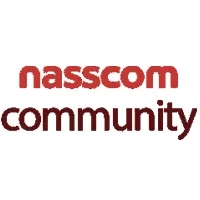- How’s the customer’s expectation changing in a contact-less economy? What kind of major opportunities can be made out of it, and equally importantly the shifts required to address it?
Acute changes in customer expectations are visible along three vectors: (a) customers want their needs to be met where they are, whether or not on digital or physical mediums; (b) they want brands to meet their evolving needs, so solutions need to adapt quickly; and (c) they want to be protected from the uncertainty of their surroundings which translates into prioritizing consistency, predictability and reliability.
To meet these expectations, enterprises need real-time connectedness like never before. They need to understand how consumer needs are changing daily, discover new consumer segments, adopt new strategies. To make this real, enterprises need to move away from what has largely been a siloed, project-oriented approach towards a platform-oriented approach that unlock agility.
Finally, it is the partnerships that enterprises create that will spell success. We live in a complex world, dependent on intricate eco-systems. The only way to make this work is to bind everyone in the partnership to the desired business outcomes. Partners must commit to owning the outcomes.
- Almost all companies had a BCP in place earlier. But it was always specific to geographies/physical location. Going forward, how will companies re-script BCP?
BCP has traditionally addressed geographically isolated events like floods, earthquakes and civil disruptions. The practice of BCP has never had to deal with anything on the scale of COVID-19 that has had such a grave impact on the workforce.
Going forward, BCP will need to cover several new priorities. First and foremost is the scenario of a large COVID-19 incidence in the company workforce. How will clients be served in such a scenario? Second, organizations need to plan for impact from digital disruption, security incidents and data theft. Each of these can paralyse a remote-working organization. Third, as has been evidenced, supply chains, logistics, finance – all need a new plan. Employee transportation for mission-critical staff and food arrangements for employees, for instance took on a whole new level of relevance in the COVID-19 scenario. With banking operations being potentially disrupted, implications of such eventualities also need attention.
- What kind of accelerated digital transformations are you witnessing in the industry, and to what extent did the pandemic precipitate it?
There are two dominant themes: (a) Remote working, employee collaboration, and (b) accelerated cloud adoption.
As we have all witnessed, the pandemic has accelerated remote collaboration and Work from Anywhere trend which has been around for over a decade. We had mobile work forces, but it was more of a good-to-have feature. Now, it has become a must-have. This has organizational consequences – employees need to have a different kind of technology enablement, and business processes need to be re-designed to support this environment.
And, as stated before, consumers and customers are rapidly evolving. This has necessitated the next level of changes towards modern experiences, real-time connection and always-on availability. Cloud adoption, real-time data-led decision making are common themes driving the current wave of transformation.
- Your insights on Responsible AI, please. Any guardrails that you have in mind?
Several large enterprises have had to battle the biases introduced by data and the self learning algorithms used by AI — we have seen some commonly known industry examples – the news aggregator that displayed racial bias, recruiting tool with an inherent gender bias and a recent of an AI-powered picture cropping app that discriminated based on skin tone. These emphasize the need for expertise and vigilance in assessing the machine learning models they deploy.
At ITC Infotech, our framework makes customers aware of the issues around data bias and provides them the guiderails to build fairness and inclusiveness into their models. The questions to ask is not, “Is my model biased?” but to ask, “Is my AI explainable? Is it accountable? Does it respect privacy and offer data security? Is it law-abiding? Is it ethical? Is it robust in relation to the social environment?”
Explainability is a big worry with enterprises. Suppose your AI provides you with a sales forecast. How does your business know if the forecast should be trusted or not? Today, AI is often a black box. We need visibility into how AI arrives at a decision.
Accountability is the next big concern with AI. Models that underlie AI decisions should ensure that the principles in use do not cause harm to business, processes and people. In this context, it is good to reflect upon and bear in mind the three laws of robotics laid down by Isaac Asimov back in 1942.
AI uses and needs a whole lot of data, which can often personally identify individuals. In this context, AI systems need to assure privacy and security for all.
The right models, data, explainability, accountability, data privacy and security are the keys to creating Responsible AI.
- What kind of early signs of global recovery are you witnessing – your thoughts, please? How is the shape of the curve likely to be?
We saw demand recovery around mid May. Enterprises wanted collaborative applications and systems. We noticed that it was experience modernization that was driving demand.
E-commerce saw an uptick. Even business traditionally shy of exploring e-commerce such as a wine store have thought about e-commerce.
There has been a surge in demand for data-led decision-making systems, given we have never experienced the situations manifesting themselves now. Specifically, the demand for predictive systems is large.
Finally, there is a broad migration to cloud and a demand for for cloud modernization. These will grow even further in the coming months, signaling faster recovery.
Some enterprises have also shown an urgency in developing scenario planning capabilities. All these will ensure more robust businesses and an improved ability to ride out severe disruptions during such pandemics.
- What is so different about leading during a crisis, vis-à-vis times of growth? Please share your thoughts.
Leadership has an especially critical role to play in times of crisis. The right leadership ensures that the team is cared for, motivated and does not lose focus of business priorities.
As the uncertanities around the pandemic unfolded, with rapidly changing priorities, any indecision by leadership would have affected employee and customer confidence. It is often said that in times of crisis, leaders must process information and act with alacrity. Leadership cannot suffer from decision paralysis. It must constantly develop new plans and adjust them as and when required. Speed over precision and action over debate always wins in such situations.
Leadership must establish great communication that builds trust and transparency. This is a function of clarity on the principles being followed.
Leaders must also exhibit extraordinary empathy and sensitivity. There is stress all around during a crisis and it is often difficult to tell what is playing on an employee’s mind. This is the time to stop and consider deeper conversations with employees, stay alert to signs of distress, and support employees unable to cope with the crisis or other personal problems.
Finally, this pandemic has shown us that leadership must also present itself as the ideal role model: are you demonstrating social distancing, wearing a mask, sanitizing your hands? Sending out the right signals fosters dependable behavior.
- How did you ensure that this crisis did not go waste? People & Process. Your top three learnings.
The pandemic has triggered several interesting decisions and actions for our business. First, it gave us the time to focus on new capabilities and re-skill our people. This has prepared us as a business to respond to customer needs, prepare for the future and provided the required confidence to employees that they will continue to be relevant.
Second, this has been a period of close and frequent communication with employees to understand their challenges and support them. The employee connect has helped build a bond and a deep and lasting sense of loyalty.
Third, we have taken customer communication to the next level. They have seen us engaging with them, showing them value and improving process governance.
We know with certainty that the crisis has pushed us all against the wall, but we have made the most of it.
- The criticality of TRUST & COLLABORATION in a contactless world. What should companies be doing to ensure these are top priorities?
Chances are there is no business left that does not appreciate the value of building tust and the ability of collaboration to manage a crisis. The remote work environment has accentuated the need for trust and collaboration, without which we could not have put businesses back on the rails.
Key is to give employees clarity on the principles that are valued by the company. Application of the principles and actions taken have to demonstrate consistency. These drive trust and collaboration.
Moreover, leadership cannot enforce top down processes in all circumstances and expect employees to fall in line. It must make a conscious decision to select areas where leadership will give swift direction, while making participative decisions in other areas.













